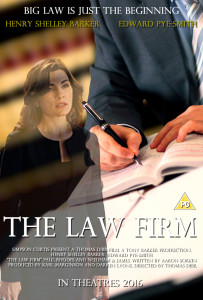So I’ve had a poll on this blog for a few months now asking “When do you think a top 10 law firm will take the plunge and move to the cloud for documents or email? (e.g. netdocuments, office365 etc)”. The results show a clear feeling that this will happen in the next 5 years (68%), 41% think it will happen sooner.
I’ve posted about Office365 previously and how some large companies are already on the platform, but the push for cost reduction and innovation in law firms at the same time surely means there has to be a move to focus staff on the new technology rather than the utility technology (and by the way I really dislike that term as it has connotations that this technology is old, unimportant or a simple commodity, it isn’t but it is the technology that people like Microsoft are now delivering as SaaS – Software as a Service).
This week also saw the news that Freshfields was looking for space in Manchester to set up a 80,000-100,000sq ft office to house back office and possibly a legal support centre. Legal Week (no link as it’s a paywall article) talked of a an initial squeeze on the market in terms of available talent, but that this will be offset by more lawyers coming into Manchester given the attraction of big names like Freshfields. But what about the squeeze on Legal IT? Manchester has a number of mid-sized law firms with IT depts in the city, I’m sure the draw of the Freshfields name will be a pull for some in Legal IT but it’s not as if Manchester is a backwater small city that is suffering from higher supply than demand in the IT sector.
I wrote a post back in 2011 on near shoring, it was around the time of Allen & Overy’s move to Belfast. I finished that post with a comment that still holds true. The lack of movement of the big London firms to shift resources out of the capital. This goes beyond law firms, but where as in recessions business is capable of rationalising their staff they still seem to miss the obvious efficiencies of moving out of the capital. Given a lot of big law now runs offices from the US to Australia and most places in between, there seems little technological reason for those functions not needing client contact to be located outside of the high cost capital city.
Now you may be reading a conclusion into this post already? But let me first throw in the other 22% of the votes on the poll, those that said big law would “Never” move to cloud based SaaS for the core document and email systems. I presume these were based on one of two things a) the feeling that law firms aren’t tech savvy enough to take the plunge (sorry but this is as tired and as untrue as the “Manchester United fans don’t come from Manchester” line!) or b) security! I can see the latter point being an issue, but I can’t help feel we’ll bust through this one at some point soon. It isn’t as though the clients won’t be considering this kind of move.
So what is my conclusion?
Well I haven’t one. As with anything in IT there is never a one size fits all solution, what works for one doesn’t necessarily work for another. But I do have a couple of thoughts:
- If you’re a small firm without a dedicated IT dept then surely SaaS is for you. I can’t think of many cons to this choice.
- If you’re a London based firm who has yet to think of moving their IT out of the capital you have to ask has the boat already sailed? Should thought be placed to a combined move North and SaaS move? (Split-Shoring?)





